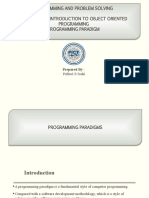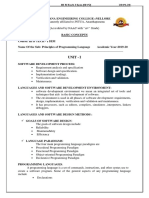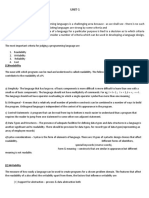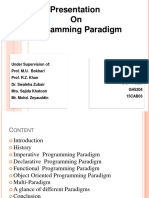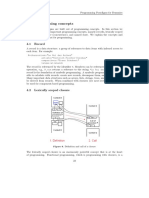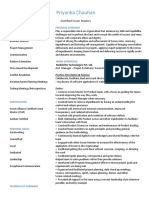0% found this document useful (0 votes)
10 views6 pagesNoad
The document discusses the various structures in programming languages, including lexical, syntactic, contextual, and semantic structures, explaining their definitions, advantages, and disadvantages. It also covers different programming paradigms such as imperative, object-oriented, declarative, and functional programming, highlighting their characteristics, benefits, and drawbacks. Additionally, it compares the main differences between these paradigms in terms of control flow, state management, and abstraction level.
Uploaded by
afomh2019Copyright
© © All Rights Reserved
We take content rights seriously. If you suspect this is your content, claim it here.
Available Formats
Download as PDF, TXT or read online on Scribd
0% found this document useful (0 votes)
10 views6 pagesNoad
The document discusses the various structures in programming languages, including lexical, syntactic, contextual, and semantic structures, explaining their definitions, advantages, and disadvantages. It also covers different programming paradigms such as imperative, object-oriented, declarative, and functional programming, highlighting their characteristics, benefits, and drawbacks. Additionally, it compares the main differences between these paradigms in terms of control flow, state management, and abstraction level.
Uploaded by
afomh2019Copyright
© © All Rights Reserved
We take content rights seriously. If you suspect this is your content, claim it here.
Available Formats
Download as PDF, TXT or read online on Scribd
/ 6







